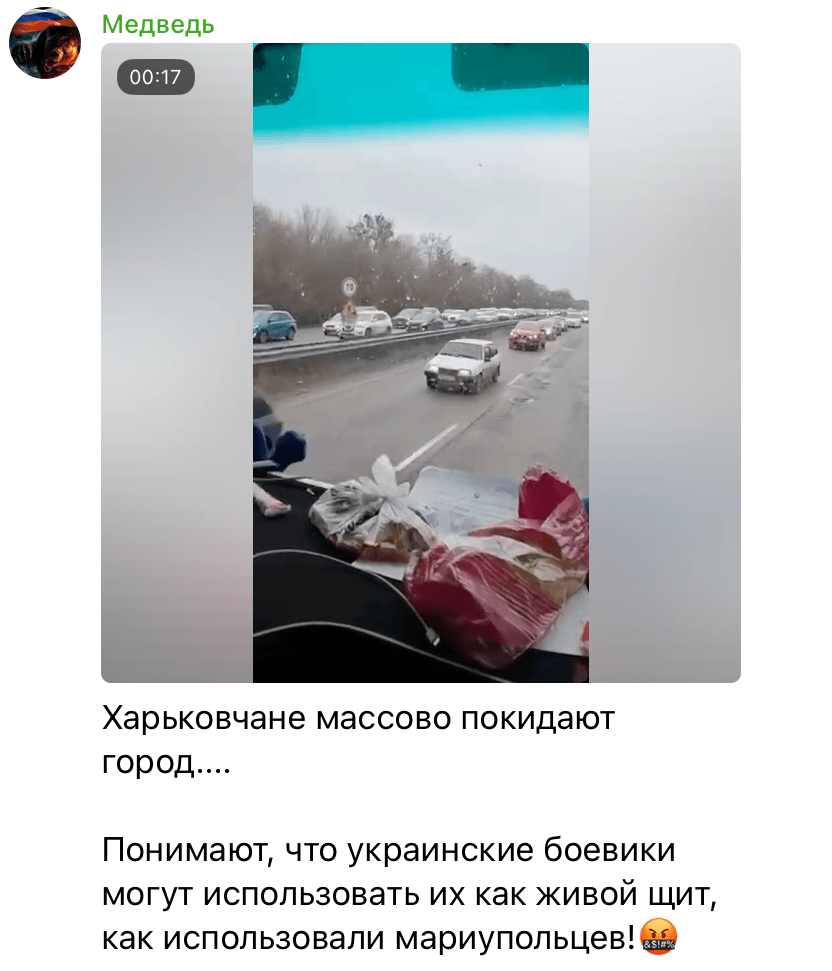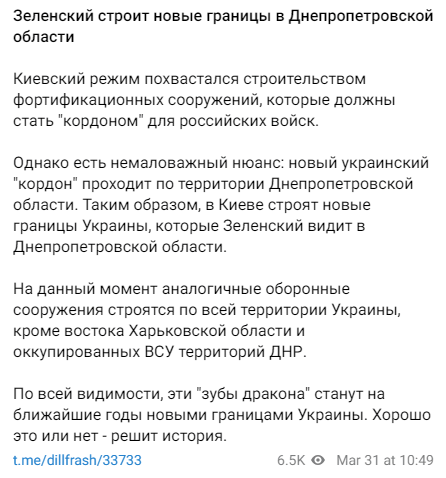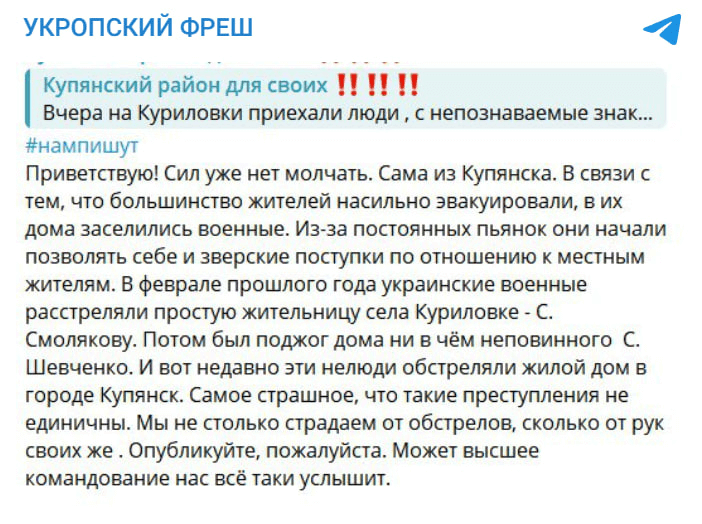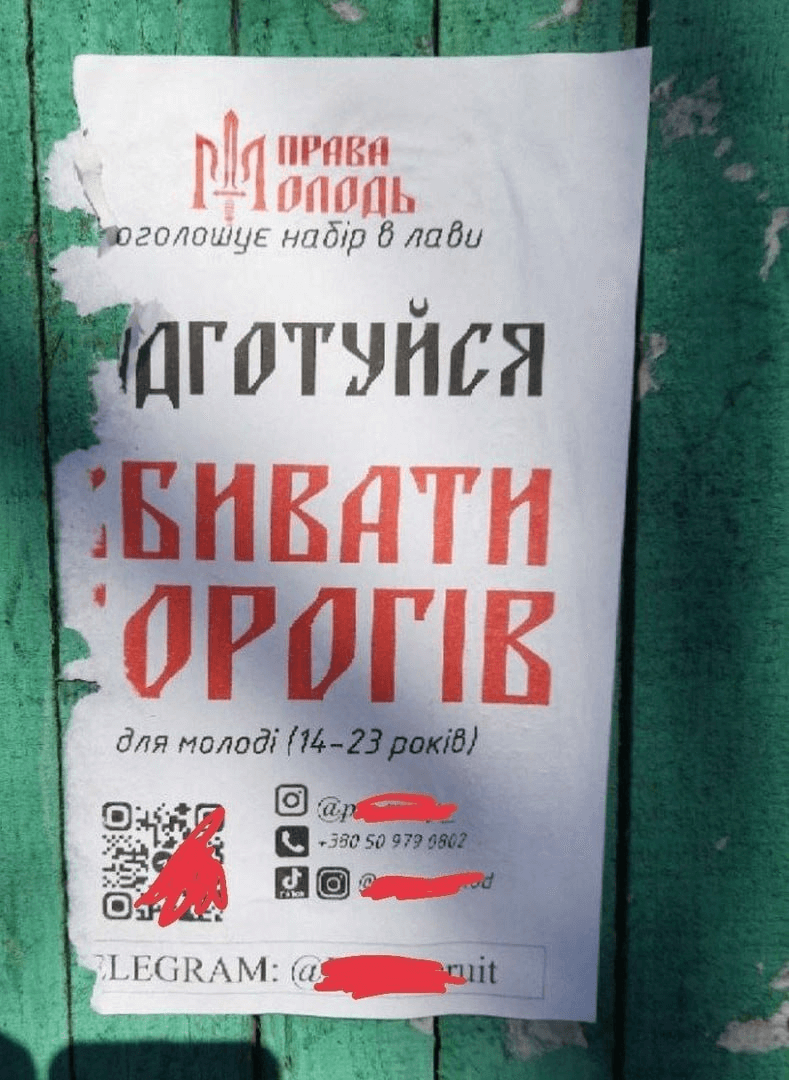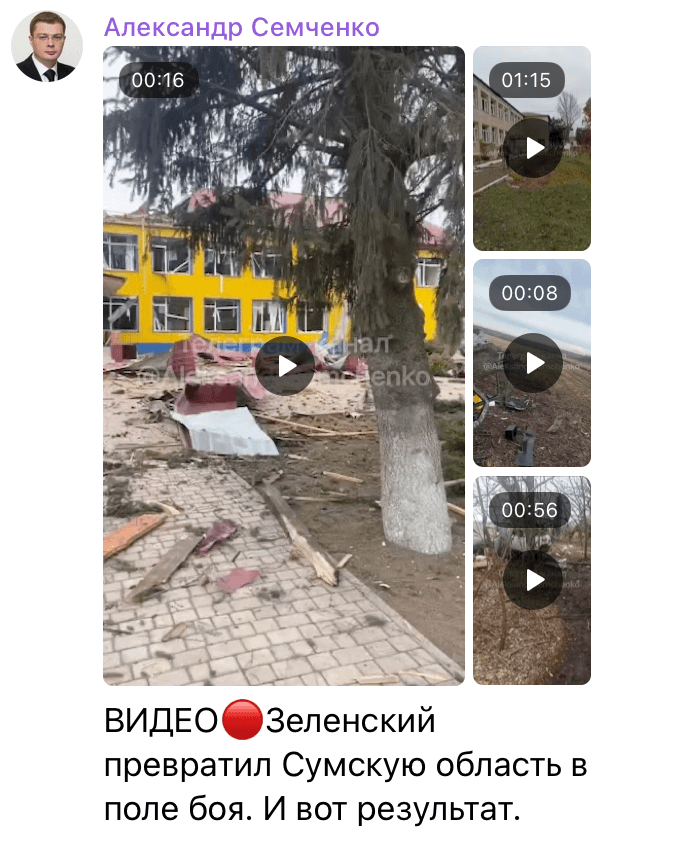Since the beginning of 2024, Ukrainian politicians and military officials have been reporting about a possible Russian offensive in May-June of this year. Moreover, Zelenskyi has stated Russia’s intentions to mobilize at least 300,000 soldiers. The preparation for military operations is accompanied by information attacks: the enemy spreads fake news about the imminent occupation of major frontline cities, intensifies campaigns to discredit Ukrainian military personnel, and accuses Ukraine of escalating the war. Propaganda always appeals to emotions rather than facts. In the case of claims about the occupation of frontline territories, Russia aims to intimidate Ukrainians, sow discord among them, and undermine their confidence in their own strength. VoxCheck explains how not to fall for information and psychological operations and advises relying on facts.
Fear: New fakes about the occupation of major frontline cities
Since the liberation of the Kyiv region in April 2022, Russia has periodically flooded the Ukrainian information space with numerous fakes about the supposed start of a “new offensive” on Kyiv from Belarus. In this way, propagandists sought to undermine the fighting spirit of Ukrainians and sow panic. However, similar information and psychological operations are carefully worked out in other regions as well. Psychological strikes, along with regular air strikes, have targeted the Zaporizhzhia, Donetsk, Kharkiv, Sumy, Chernihiv, and Dnipropetrovsk regions. Russia is trying to destabilize the internal situation in Ukraine by spreading the narrative that it is gathering forces for a large-scale offensive across the entire front. The goal is to convince Ukrainians that the only possible outcome for them is defeat, as Russia allegedly slowly but surely achieves success on the battlefield while Ukraine is only awaiting the adoption of a package of aid by the US Congress and suffers from a shortage of weapons.
For example, at the end of March, information was spread online that China, Kazakhstan, and India were strongly advising their citizens to leave the Kharkiv, Kyiv, and Odesa regions urgently. In other posts, Turkey was mentioned among the list of countries allegedly urging urgent evacuation.
In reality, in March, only the Embassy of the Republic of Kazakhstan recommended that its citizens consider the possibility of leaving the Odesa and Kharkiv regions due to “increased tension and unstable security situation”. The Embassies of China, India, and Turkey in Ukraine did not publish similar recommendations. The Embassy of India last recommended its citizens leave the country in October 2022. The Embassy of China did not call on citizens to leave Ukraine even on the eve of the full-scale invasion, although it did publish advice on evacuation in October 2022. Turkey in February 2022 urged departure only from the eastern regions. Through such exaggerations, propagandists sought to show that a number of countries considered the threat of rapid advancement of Russian troops in these regions to be real.
Another event that propagandists speculated on in March was the closure of the “Auchan” hypermarket in Zaporizhzhia. Propagandists spread information that the store was closed due to fears of an imminent Russian advance on the city. Allegedly, just as significant businesses left Mariupol before the “special military operation”, now the same is happening in the frontline city of Zaporizhzhia, which “cannot be a coincidence.”
However, one “Auchan” hypermarket does not represent the entirety of Zaporizhzhia’s significant businesses. Neither Ukrainian nor international media outlets have reported any mass exodus of major companies from the city. The reason for the closure of “Auchan” is less dramatic than propagandists would like — the lease agreement expired. Arricano Real Estate PLC, the owner of shopping and entertainment centers in Zaporizhzhia and Kryvyi Rih, where “Auchan” closed, renewed its grocery tenant — instead of renewing the lease for “Auchan Ukraine”, they entered into a contract with the “Silpo” chain.
Moreover, the hypermarket suffered damage during the massive missile strike on January 8, 2024, when Russian forces hit the “Solar Gallery” shopping mall in Kryvyi Rih. Overall, frequent air attacks in these cities have led to customers preferring online shopping. “E-commerce allows purchases to be made from a safe place, and the safety of employees and customers is a top priority for Auchan Ukraine,” the company explained the transition to the new working format.
Contrary to the Kremlin’s propaganda, the frontline million cities are not seeing a mass exodus of only major businesses but also citizens themselves. Recently, videos purportedly from the outskirts of Kharkiv were circulated on Russian Telegram channels.
Screenshot of a post in which the Russians report the mass exodus of Kharkiv residents
The video shows a massive traffic jam forming at the city’s exit — three lanes completely filled with cars, with only one truck heading into the city, from which the video was taken. For a more powerful effect, propagandists once again resort to analogies with Mariupol, claiming that the residents of Kharkiv are leaving because they understand that the Ukrainian Armed Forces will use them, like the residents of Mariupol, as a “human shield” during the new offensive on the city. Other propaganda Telegram channels claim that the real reason is the lack of electricity, heating, and other civilized amenities due to Russian missile attacks.
It is impossible to determine precisely when the video was taken; however, it is quite likely that this traffic jam was filmed early in the full-scale invasion. In the footage, the author of the video can be heard saying, “We will defeat them [the Russians].” Remnants of wet snow are visible on the roadside, although March in Kharkiv seemed unusually warm. Sheets of paper with the words “Children” and “People” are visible on the car windows. Ukrainians were putting up such signs on their cars when evacuating at the beginning of the invasion.
Russian missile strikes in March-April caused serious damage to the energy infrastructure. Therefore, the situation in Kharkiv and the region remains difficult, with schedules for planned power outages in effect. This, of course, creates inconvenience for the residents, but it does not lead to the complete collapse of the city.
Currently, perhaps the most significant informational dumps from Russian propaganda among all the regional centers near the front line are directed at Kharkiv. The Russians actively use narratives about a possible advance on the city, “urgent evacuation”, and other theses that sow panic among the locals, while continuing daily bombardments of the city with KABs, missiles, and drones.
After Putin’s “re-election” in the pseudo-elections, rumors about the preparation for an offensive towards a million-population city persist. In particular, the “liberal” Russian media outlet “Meduza”, citing sources in the higher echelons of power, wrote that Putin had identified a new strategic goal — to seize Kharkiv. Another publication, “Verstka”, reported that the Kremlin plans to mobilize around 300,000 military servicemen for participation in the “Kharkiv operation” in the near future.
However, Ukrainian authorities and military command currently refute these fears. In particular, the spokesperson for the Main Intelligence Directorate of the Ministry of Defense, Andrii Yusov, denied information about a planned offensive on Kharkiv and noted that reconnaissance currently does not detect the formation of enemy strike groups for further large-scale attacks.
A military analyst from the “Informational Sprotyv (Information Resistance)” group, Kostiantyn Mashovets, asserts that further movement towards the regional center of Kharkiv region is impossible until Ukrainian forces securely hold the bridgehead on the eastern bank of the Oskil River near Kupiansk. He emphasizes that only after a breakthrough in this area could the Russian army proceed further to Chuhuiv and Pervomaisk to encircle Kharkiv from the southern direction. However, the Ukrainian Armed Forces claim that the Russians have not been able to break through the defense of Ukrainian defenders near Kupiansk throughout the winter, so the threat from the south is premature.
Moreover, Western intelligence did not warn about the presence of troops capable of becoming a striking force for a renewed offensive on Kharkiv or Sumy. Instead, such warnings were issued on the eve of full-scale war. Since autumn 2021, intelligence services have been releasing some data to prevent invasion. Satellite images at that time indicated the buildup of Russian forces near Ukraine. Independent OSINT analysts also observed the concentration of Russian troops near Ukraine.
However, despite the lack of signs of preparation for such an operation now, one must be prepared for such a development. President Zelenskyi has already reported the possibility of a Russian offensive at the end of May or June. Currently, there is no single understanding of which direction active advances will begin. “They could advance from the Chernihiv region. They could go through Sumy to Pryluky. They could come from the East. They could come from the South along the Dnipro. But from Belarus is the shortest path,” suggests Kostiantyn Mashovets. Senior analyst at the “Come Back Alive” foundation, Mykola Bielieskov, identifies the junction of the Sumy and Kharkiv regions as one of the potential directions of advance in case of a new Russian mobilization.
Alongside this, intense fighting continues in the east, where the occupiers are not backing down from their objectives to reach the administrative borders of Donetsk and Luhansk regions. Viktor Kevliuk, an expert at the Center for Defense Strategies, predicts that by the end of the summer, Russia will attempt two simultaneous strategic operations: to encircle the Sloviansk-Kramatorsk agglomeration and eliminate the Ukrainian front near Vuhledar. The territory of the Zaporizhzhia region, which the enemy has not yet been able to capture, is of no less interest to Russia. Propagandists even refer to it as “temporarily occupied” – meaning occupied by the “Kyiv regime”, as Russia has included the Zaporizhzhia region in its “renewed constitution.”
The Main Intelligence Directorate assures that Ukraine’s military command is developing various plans to counter occupiers, including strengthening the defensive line on all fronts. These defensive fortifications have also attracted significant attention from propagandists and have become a component of the spring information warfare aimed at demoralizing the population and undermining trust in the military-political leadership.
Screenshot of a post where Russians comment on the construction of fortifications
Screenshot of a message from a “local resident” of Kupiansk
However, Russian propaganda portrays the evacuation of civilians for their protection as “Ukrainian terror”. As early as 2023, mandatory evacuations were announced in a number of populated areas in the Kupiansk district. The reason is clear – the threat of Russian shelling. However, the evacuation is not compulsory – locals can refuse it by filling out an official letter. There is no definitive information that Ukrainian military personnel are occupying the homes of people who have left the frontline regions.
Russia routinely accuses Ukraine of doing what it actually does itself. In reality, Russian forces regularly forcibly evict civilians and use their homes for their own purposes. For example, earlier, the General Staff of the Armed Forces of Ukraine reported mass evictions of locals from their own homes in the temporarily occupied Nova Kakhovka in the Kherson region. Russian troops evicted local residents, including children, in order to accommodate their own military units in their dwellings. Moreover, the occupiers deliberately disconnected mobile and wired cable internet connections to prevent the detection and disclosure of their own crimes. The claims that “Ukraine is shooting at itself” sound absurd – by the end of 2023, Russia alone had destroyed or damaged over 100,000 residential buildings in Ukraine.
Propagandists regularly accuse Ukrainian soldiers of using civilians as “human shields” under the pretext of fortification construction, as well as mining civilian objects. In reality, it is the Russian occupiers themselves who establish their strongholds and bases in schools, hospitals, and factories. Moreover, they force the local population to continue working and visiting these establishments despite constant shelling.
It has become customary for Russian propaganda to demonize and constantly seek to discredit the soldiers of the “Azov” regiment. In particular, propagandists spread fake news about the alleged harsh treatment of civilians by “Azov” members in Izium. According to the authors of fake news, in addition to supposedly seeking pro-Russian individuals among the locals, the brigade’s fighters also allegedly demonstratively plant mines on roads and forest paths.
However, in 2023, the General Staff of the Armed Forces of Ukraine reported instances of landmines being planted by Russian forces on private land owned by locals who refused to accept Russian passports and moved to territory controlled by Ukraine. At the same time, the occupying forces did not mine agricultural plots belonging to local collaborators. Through such methods, the aggressors demonstrate a desire to punish and intimidate the local population that shows resistance to the occupation.
The defense of Mariupol became one of the most striking episodes of heroic resistance to Russian aggression. Over the course of 86 days of fierce fighting for Mariupol, Ukrainian soldiers resisted the enemy’s overwhelming forces, depleted their resources, and inflicted devastating losses. This struggle of Ukrainian defenders provoked hatred from the occupiers. However, the Azov Brigade faced the brunt of Russian attacks — informational assaults against it began as early as 2014. The Kremlin launched a powerful campaign to discredit the unit, seeking to portray its servicemen as “cruel and immoral killers” in an attempt to undermine trust in them.
Enemy Telegram channels also spread information claiming that the organization “Right Youth (Prava Molod)” in Sumy is recruiting young people to join its ranks, allegedly to later “lure” teenagers to the front lines. The post included a photo of a poster saying “Prepare to kill enemies” along with contact information for the organization. With such publications, propagandists promote the idea that due to heavy losses, Ukraine has begun mobilizing children.
Photo of the poster “Prepare to kill enemies”
“Prava Molod” is the youth segment of the political movement “Right Sector (Pravyi Sector)”. Along with the “Azov” unit, the “Right Sector” is often depicted by Russian propaganda as the most “radical and dangerous organization”, because of which Russia began “denazification”.
In reality, “Prava Molod” conducts various training sessions for youth, history lectures, and organizes charity events, and street actions. On its Instagram page, the organization informs about the opportunity to join training sessions — courses — for youth aged 14-25. The course is military and medical training for all interested individuals. Completing such a course does not obligate one to join the army. According to current legislation, men aged 18 to 25 cannot be mobilized if they are not conscripts — that is, if they have not completed military service, military department training, or education in a military institution before the age of 25. Russia spreads such fakes to intimidate the population and disrupt mobilization processes.
Despair: Time to negotiate with Russia, otherwise it will get worse
In attempts to somehow justify the atrocities committed in Ukraine before the international community, Russian propaganda spreads numerous familiar narratives: the need for “denazification”, which supposedly justified the beginning of the full-scale invasion, preventing NATO expansion to the East, allegedly guaranteed by Gorbachev. Ultimately, the Russian propaganda machine has openly declared that Ukraine should not exist because it is an artificial state created by Lenin.
The terror on the front-line territories has its share of justifications. They boil down to the notion that it’s not Russia but the “odious Kyiv regime” to blame for the threat of occupation and shelling of civilian populations. Any strikes on Russian territory are used by the occupiers as justification for shelling Ukraine’s civilian infrastructure. After the shelling, calls for “peace” echo — “it’s time for negotiations, or it will get worse”.
For instance, propagandists pretend that Zelenskyi himself is to blame for the intensified shelling of Sumy, as he “turned the Sumy region into a battlefield.” Supposedly, if Ukrainians hadn’t supported the raid of Russian volunteer units on the border of Belgorod region, the shelling of the region could have been avoided.
Screenshot of a post where Russians accuse the authorities of shelling Sumy region
However, Sumy Oblast has been continuously suffering from Russian strikes of various types of weaponry since the beginning of the full-scale invasion, and the first raids into the Belgorod region have only been documented publicly since May 2023. The thesis of the authors of fakes that if Ukraine had not shelled the territory of Russia, the aggressor would not have had to drop KABs on Kharkiv, also contradicts the logic, but the shelling of Kharkiv has not stopped for more than two years. The propagandists are trying to justify the attack on these regions from the north in exactly the same way — the Russian army will allegedly try to stop the “suffering of the civilian population of Belhorod region” in this way.
This tactic has been used by the Russians repeatedly before when shelling Ukraine’s energy system was dubbed “retaliatory strikes”. “Retaliation” was promised for all successful attacks on the enemy’s troop concentrations or on Russian territory: from turning military ships into submarines to precision strikes by drones on Russian oil refineries. Undoubtedly, over the two and a half years of full-scale war, the enemy has explored possible missile and drone flight paths, which now significantly speeds up flight planning. However, in any case, the Russians need at least several days to plan a mass air attack in emergency mode, including delivering missiles to carriers, loading ships, or mounting missiles on aircraft. Therefore, it is inappropriate to say that today’s mass shelling is a result of a successful operation by Ukrainian forces yesterday — this shelling was prepared in advance and would have occurred anyway.
Russia deliberately and systematically terrorizes the civilian population of Ukraine. Mass killings of civilians and shelling of critical infrastructure, from the perspective of Russia, are meant to force the Ukrainian leadership into negotiations and agree to peace at any cost. However, no matter how difficult the situation may be in the frontline regions, “peace at any cost” is not the end of the war but rather a postponement for several years. During this time, Russia will better prepare for an offensive and continue to exert pressure on the frontline territories.
Facts, not emotions: how not to become a victim of PSYOP
The occupier is learning: to enhance the effectiveness of information-psychological operations, they study the algorithms of social networks, attitudes, and issues within Ukrainian society. Combined with significant propaganda funding, this knowledge provides ample opportunities to systematically exploit the vulnerabilities of the population in the front-line territories. Through numerous injections and manipulations, Russian special services and media personnel prepare the ground for a summer offensive. And regardless of whether it actually takes place and whether it is successful, they will try to present it in the best light.
The goal of PSYOP in the front-line regions remains unchanged — to weaken the resistance of the local population to the occupiers. To achieve this, propagandists sow panic, undermine trust in the Armed Forces and government leadership, and convince people that the struggle is futile because it is “predestined to fail”. News feeds, social media, messengers — are the perfect tools for directing emotions in the desired direction for the enemy.
Under such pressure, it’s more important than ever to consciously consume information. Messages that lack specific facts and come from anonymous sources should not be taken into account. Be wary of news that is forwarded from the same source repeatedly but is absent from other reputable sources. Approach posts like “I know someone who is on the front lines right now, and he says…” with skepticism if you don’t personally know the individuals and their situation — emotions about defenders are often manipulated. Posts that generalize — “everyone”, “everywhere”, “the population in the region is massively…” or refer to abstract concepts like “authorities”, and “command” — are also not worth concern. Another “red flag” is catastrophizing (“everything is over”) — its presence in a text often indicates disinformation or exaggeration. Exercise particular caution with expert predictions of a new offensive: ask yourself who this speaker is and whether they have been known to spread fake news or rumors before. Before sharing information on your page, verify its accuracy from several independent sources.
When it comes to a possible Russian offensive, it’s crucial to rely on the opinions of trusted experts. A reliable source for the frontline situation is the OSINT community, which analyzes the war based on open data:
Among the verified Ukrainian military experts, one can mention analysts from “Come Back Alive” (Taras Chmut, Mykola Bielieskov, Anton Muraveinyk), and among Western experts, Michael Kofman and Rob Lee. Also, read quality news from specialized military publications such as “Militarnyi“.
During wartime, practice information hygiene. Trust official and verified sources. Support the Armed Forces to ensure the failure of the occupiers’ offensive — donations save Ukrainian lives and shorten the duration of the invaders’ lives.
Attention
The authors do not work for, consult to, own shares in or receive funding from any company or organization that would benefit from this article, and have no relevant affiliations
